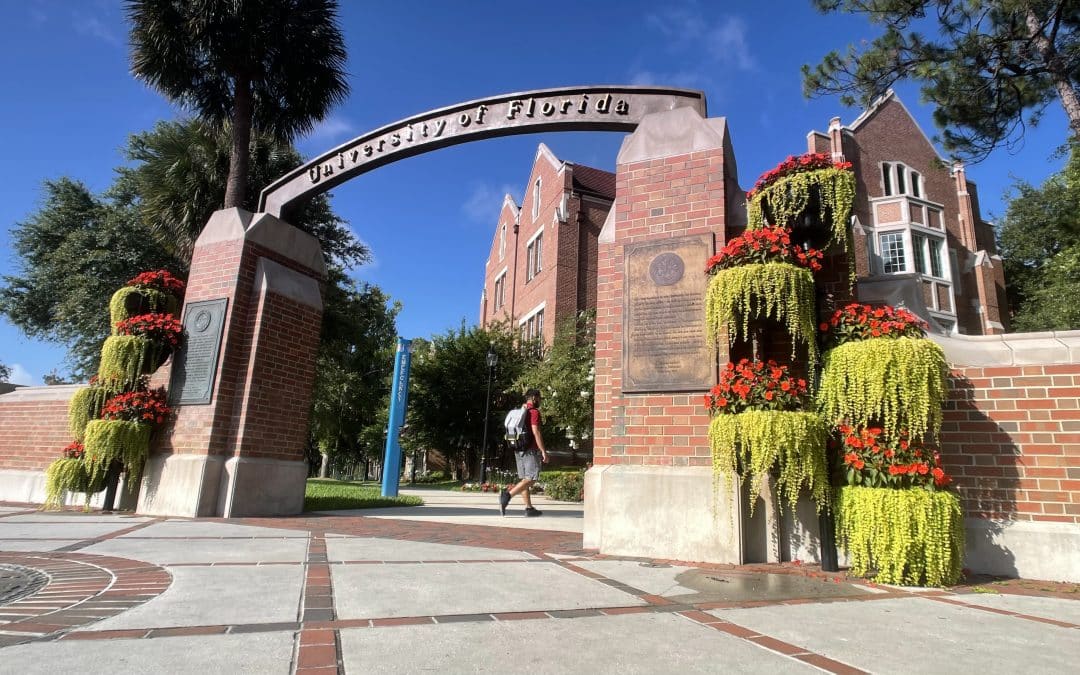UF Warrington & AACSB partner to share best practices in AI and analytics education
The University of Florida’s business school and the premier business school organization came together for a conference about how schools can infuse AI and analytics into their existing curriculum, research and programs.
In recent years, businesses have set a demand for graduates across disciplines with artificial intelligence (AI) and analytics competencies that can be immediately applied to their work. With this need, business schools across the nation are enhancing their AI and analytics-focused plans and programs to help build the workforce of the future.
In fact, according to AACSB, the number of programs across all levels either focused on analytics, data and AI or with majors/concentrations in such content has grown by over 91% in the last five years.
To help business schools advance their programs to meet the demand from business employers, the University of Florida Warrington College of Business partnered with AACSB, the premier accrediting organization for business schools, for a virtual conference featuring faculty and leaders from 17 different universities and organizations sharing best practices and insights.
“I believe that business schools today have a unique opportunity,” said Saby Mitra, Warrington College of Business Dean. “The real gap in AI and analytics for most organizations is not really on the technology side, but in the use of the technology to make a business difference. Business schools can have a large impact in developing the workforce of the future by preparing our students to work at the intersection of business and technology.”
Attendees representing 13 countries heard presentations addressing how business schools can prepare learners for the quickly changing landscape and expectations for the workforce they are entering, how innovating technologies can create better learning experiences, how AI and analytics are being used to help solve some of the world’s most pressing issues, and more.

Jack Faricy Professor and Director of the Business Analytics and Artificial Intelligence Center Jim Hoover.
Two faculty members from the Warrington College of Business shared their insights as part of the conference.
Jim Hoover, Jack Faricy Professor and Director of the Business Analytics and Artificial Intelligence Center, presented with Amy Russell of the University of California – Davis on the competitive advantage of developing a business analytics program, like the UF Master of Science in Information System and Operations Management Business Analytics degree program.
Hoover, citing data and his experience in consulting, highlighted that there are not enough business analytics graduates to fill the open jobs, leading to a challenge for businesses, but an opportunity for business schools to fill a need.
“My experience, when I was in the commercial world working for Accenture, was that it was really hard to find the graduates who have the kind of skills needed both in data science and graduates who had understanding of the business domain area,” Hoover said. “There’s a quarter million shortage of data scientists, particularly those who have skills associated with business, so there’s a big opportunity.”
For those schools interested in adding a business analytics degree program to their curriculum, Hoover and Russell broke down the six aspects of a good analytics program, including:
- Teaches commercial analytics and programming language, like Python or SQL, and analytics process methodology, in which students start at the business problem and use analytics to solve the problem
- Includes domain knowledge in major business areas, like accounting, management, marketing, and finance
- Incorporates a real-life practicum experience, where students have the opportunity to work on a real company’s problem with hard data
- Has STEM designation
- Is a one-year master’s program
- Offers career development opportunities

Professor of Management Nan Zhang
Management professor Nan Zhang also presented at the conference. Zhang’s presentation focused on why seeking out research funding is important for business professors when it comes to AI projects and shared tips for finding such funding.
Zhang noted that funding can provide support for a wide range of research projects, even those that are interdisciplinary between fields of study, and cited an example from his own research.
“My current research concerns the use of artificial intelligence and machine learning in human resource management, like personnel selection,” Zhang said. “Believe it or not, this topic is of tremendous interest in the computer science community as well. When computer scientists address these topics that are directly to a field of business research, they could benefit from collaborating with business professors, not just to be better informed of what has been done in the literature, but also to increase the credibility in funding support.”
Zhang shared two funding opportunities business faculty can seek out to support their work. First, organizations that have a ‘bottom-up’ approach to fundamental research, meaning government organizations like the National Science Foundation that ask researchers to submit their own ideas which are selected though a peer-review process.
The other option is a ‘top-down’ approach, which are solicitations by organizations for researchers to present research ideas to specific problems, like those made available by the Defense Advanced Research Projects Agency (DARPA).
See more insights from the UF Warrington and AACSB AI Conference on Twitter from Jim Hoover and Nan Zhang.




